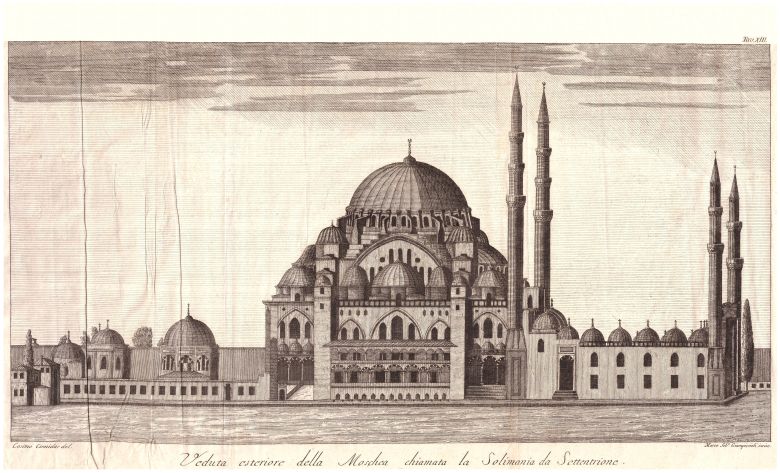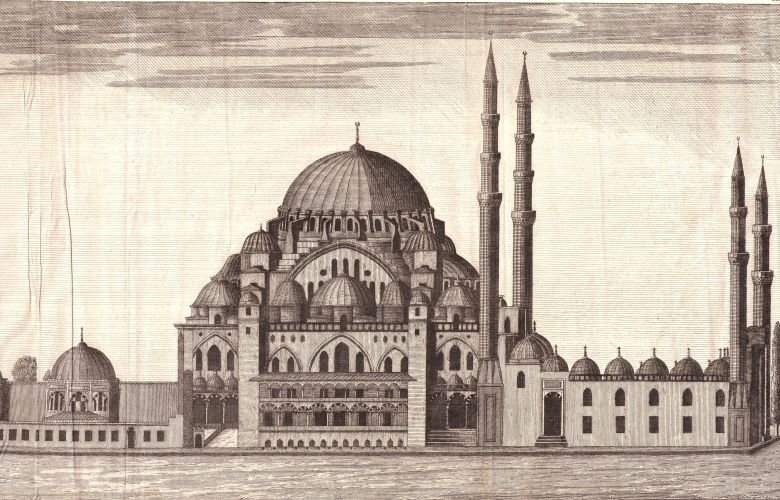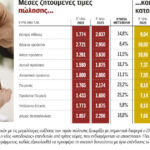The new cycle of online tours of the Aik Foundation. Laskaridis starts on January 8
A rich travel and pictorial material about Istanbul, the eternal city, from the travel collection of the Aikaterini Laskaridis Foundation, one of the largest in Europe, is presented free of charge with a simple registration.
Specifically, through eight online guided tours (January 8 and 22, February 5 and 19, March 4 and 11 and April 1 and 15 2024) with the central title “Traveling to Istanbul with the tourists: From the Conquest to the beginnings of the 20th century” and guided by the historians Iolis Vigopoulou and Dimitris Loupis, those interested, via zoom, will tour the Constantinoplediscovering its places, monuments and people from the 16th to the beginning of the 20th century.
The two speakers, starting from the travel literature and its iconography, will refer to the description of the city by its Western European visitors, the formation of the Ottoman capital and the monuments that characterize it, the different social and religious groups that composed its unique mosaic and in their contribution to its residential fabric. The presentation will be given alternately by the two speakers (once a month each until the end of the guided tours) and will follow the developments chronologically. The new series of online tours, which, like the previous ones, are part of the program “Travelogues – With the View of Travelers” (https://el.travelogues.gr) of the Aik Foundation. Laskaridis, starts on Monday, January 8 at 19:00 with I. Vigopoulou.
“All this time we have a travel stream from Europe to the East for various reasons. More than 2/3 of travelers – tourists, diplomatic representatives, members of scientific missions, etc. – who stay or pass through the capital of the Ottoman Empire, Istanbul, write about this capital. Through this current, which has specific goals and destinations for each period, all the political, cultural or artistic currents that occur in Europe are projected. In other words, Renaissance, Humanism, Neoclassicism, Philhellenism, Romanticism… So the traveler is a bearer of what is happening in the West and his work shows something of them”, says I. Vigopoulou to APE-MPE.

The travel texts about the City present to the European readership everything about the world that made up the multicultural Istanbul – institutions, habits, beliefs, everyday life, religions. “Everything. Because let’s not forget that the Ottoman Empire is not one race, one people and one language, but many ethnicities and religious minorities – Greeks, Bulgarians, Serbs, Romanians, Albanians, Vlachs, Armenians, Jews, Russians, Caucasians – that coexist in the capital. This, then, the human element, in combination with the anthropological interest of Europe that appears from the 18th century (eg Encyclopaedism), is presented very strongly in the descriptions of the travelers – clothing, officials, minorities, merchants, itinerants, the world of women , of the harem… Gradually, since the 19th century, the detailed description of bazaars, coffee shops, streets, bridges, cemeteries, almshouses… Everything that excites Westerners, explains the APE interlocutor- BE.
The pictorial material, on the other hand, not particularly rich in the first period, gradually increases. “Gradually, something like an avalanche happens, and the pictorial material swells continuously until the 19th century. It is a valuable material in the hands of archaeologists, architects, art historians, that is, how each monument was or how it evolved. So we have a lot of Byzantine churches that became mosques, new mosques, luxurious buildings, palaces, imarates, hammams, the naval station – all buildings that impress tourists. But also the various human types with their costumes, which remain approximately the same for several centuries, are elements of particular interest in the hands of anthropologists, ethnographers, folklorists, etc. And because the material, textual and pictorial, about Constantinople is huge – it can in no way be compared to a small area, an island for example -, everything we present will be representative, selective and indicative”, he adds.
For his part, the historian Dimitris Loupis, as reported in APE-MBE, will focus “on the formation of Constantinople as the capital of the Ottoman Empire through architecture by observing phenomena such as the conversion of Byzantine temples into Islamic mosques, the construction of new mosques and others types of buildings that served the religious, economic, social and political pursuits of the Ottoman dynasty and the highest officials as donors”.
“The evolution of Ottoman architecture from the phase of formation of a characteristic idiom during the 15th and early 16th centuries, the era of Mimar Sinan and the peak of the formation of a distinct cultural identity in the years of Suleiman, the consolidation, experimentation and renewal it experienced architecture during the 17th and 18th centuries, the contact with Western forms of Baroque and Rococo, finally the 19th and 20th centuries and the transition from the imperial style to eclecticism and neo-Ottomanism together with the response of other religious communities to period after the Reforms until the end of the Ottoman world, are the issues that will be presented”, concludes D. Loupis.




